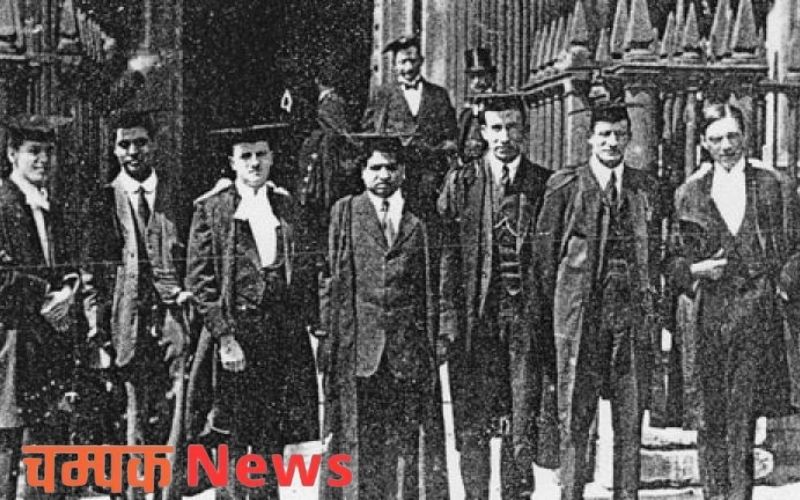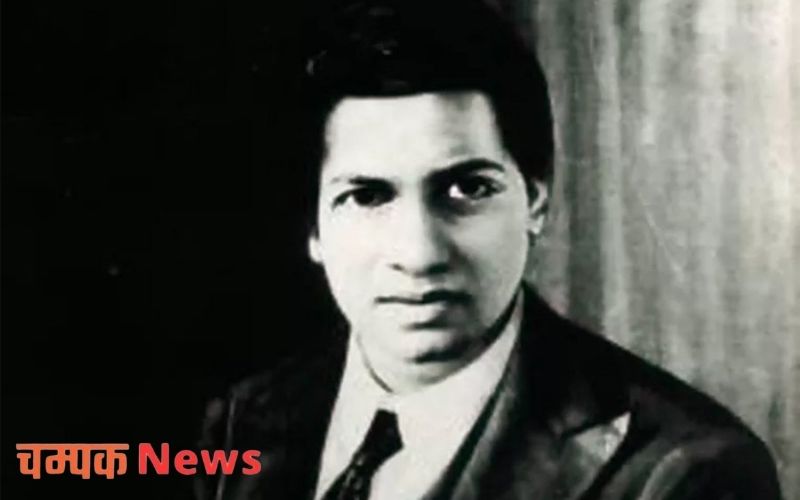Srinivasa Ramanujan Biography:- Srinivasa Ramanujan or Srinivasa Ramanujan Aiyangar was an Indian mathematician who lived during the British Rule in India. He is known worldwide to have made substantial contributions to mathematical analysis, number theory, infinite series, and continued fractions.
Srinivasa Ramanujan Wiki & Biography
Srinivasa Ramanujan was an Indian mathematician who is known to have made groundbreaking research in the field of mathematics which includes mathematical analysis, number theory, infinite series, continued fractions, and even provided solutions to mathematical problems than were considered unsolvable.
He conducted his initial research in India in isolation and carried forward his advanced mathematical research at the University of Cambridge, England with the English mathematician G.H. Hardy.
During his short life, he compiled nearly 3,900 identities and equations independently, including the Ramanujan prime, the Ramanujan theta function, partition formulae, and mock theta functions.
All of his work in all the areas of mathematics were published in a book called “The Ramanujan Journal”, a scientific journal, and his notebooks were used as a reference for future research.
Ramanujan became the first Indian to be chosen as a Fellow of Trinity College, Cambridge. He returned to India in 1919 due to his illness and died at the age of 32 in 1920.
Srinivasa Ramanujan Age & Family
Srinivasa Ramanujan was born on 22nd December 1887 in Erode, Mysore Kingdom (now Tamil Nadu, India), British India in a Tamil Brahmin Iyengar family.
His father, Kuppuswamy Srinivasa Iyengar was a clerk in a Sari shop and his mother Komalatammal was a housewife who used to sing at a local temple.
He had three younger siblings who died within a year after their birth. During his early childhood, his family lived in Kumbakonam. Later on, he moved with his mother to her parent’s house in Kanchipuram, near Madras (now Chennai).
He was a rigorously orthodox Hindu since childhood and was a strict vegetarian. He learned all the Brahmin traditions and culture in childhood from his mother.
He was an ardent devotee of his family goddess, Namagiri Thayar (Goddess Mahalakshmi)of Namakkal.
Srinivasa Ramanujan Health Issues & Cause Of Death
Srinivasa Ramanujan was mostly unhealthy throughout his life. His health worsened in England due to his strict vegetarianism and the wartime rationing in 1914-18.
He was diagnosed with tuberculosis and had a severe deficiency of vitamin due to which he was confined to a sanatorium. He died in 1920 at the age of 32 after which his brother compiled his remaining handwritten notes.
A 1994 analysis of Ramanujan’s medical records suggests that his medical symptoms were more familiar to hepatic amoebiasis, an illness then widespread in Madras than tuberculosis.
But due to a lack of proper diagnosis, his condition became severe and he died of it although the disease was treatable at that time in England. But Ramanujan had already left England by then, during the First World War.
Srinivasa Ramanujan Wife & Children
Srinivasa Ramanujan was married to Janaki Ammal in 1909. Three years after their marriage, Janaki stayed at her parent’s place only until she reached puberty.
In 1912, she started living with his husband and her mother-in-law in Madras.
She moved to Bombay after his death and in 1931, returned to Madras and settled there in Triplicane.
The couple had no child of their own so in 1950, after 30 years of Ramanujan’s death, his wife adopted a son, W.Narayanan who later on became an officer of the State Bank Of India and raised the family.
She was always active in her life to increase her husband’s public recognition, and even some of the prominent mathematicians visited her during their stay in India. She died at her residence in 1994.
Srinivasa Ramanujan Educational Qualification
Ramanujan took his primary education at Kangayan Primary School but had to leave midway. He was a very bright student at his school.
He then joined Town Higher Secondary School at the age of 11 where he already attained enough mathematical knowledge. By the age of 13, he had mastered advanced trigonometry and started assisting his teacher with their work.

Ramanujan studied at Trinity College, Cambridge University, England, and was awarded a Bachelor of Arts by Research degree in March 1916 for his work on highly composite numbers.
Before that, in India, he also studied at the Government Arts College and at the Pachaiyappa’s College but was not awarded any degree as his entire focus was only on mathematics, and failed in most of the other subjects.
Srinivasa Ramanujan Career Details
Before beginning his career as a mathematician, Ramanujan looked for clerical positions jobs in Madras. He even tutored students at the college to make money.
In 1931, he got a research position at the Madras University and moved with his family to Triplicane. He, later on, published his work in the Journal of the Indian Mathematical Society and provided problems to be solved in it.
He formulated the solution to the problem of the infinitely nested radical. He wrote his first formal paper for the Journal on the properties of Bernoulli numbers which contained 17 pages. He wrote another paper later.
In 1912, he got a position as an accounting clerk at the Madras Port Trust and continue doing his mathematical research.
In 1913, Ramanujan started interacting with British mathematicians at Cambridge University with his friends’ help. He started sending his papers to them, to G.H. Hardy as well who was highly impressed by Ramanujan’s intellect in mathematics.
Hardy expressed his generous desire to meet Ramanujan and planned his trip for Cambridge. The offer was initially rejected by Ramanujan as he was reluctant to leave his country and go to a foreign land.
He was later offered a monthly research scholarship of 75 rupees for two years at the University of Madras. After quite some time, Ramanujan agreed to visit England and reached there on 17th March 1914.
After reaching, he immediately started his research work with Hardy and Littlewood who both compared his excellency with that of the mathematicians Euler or Jacobi.
Ramanujan researched for nearly five years in Cambridge working with Hardy and Littlewood. He was awarded a Bachelor of Arts by Research degree in March 1916 for his work on highly composite numbers.
On 2nd May 1918, he was elected a Fellow of the Royal Society and on 13th October 1918, he was the first Indian to be elected a Fellow of Trinity College, Cambridge.
Srinivasa Ramanujan Achievements
Ramanujan proposed an abundance of formulae that were investigated later in-depth and opened new directions of research, one of these was, the infinite series for π which forms the basis of some of the fastest algorithms currently used to calculate π.
He derived some previously unknown identities. In 1918, Hardy and Ramanujan studied the partition function P(n) and gave a non-convergent asymptotic series that permits the exact computation of the numbers of the partition.
In the last year of his life, he also discovered mock theta functions.
The number 1729 is known as the Hardy-Ramanujan number, according to Ramanujan, it is the smallest number expressible as the sum of two cubes in two different ways.
Ramanujan wrote his bulk of results in four notebooks of looseleaf paper, the first has 351 pages, the second has 256 pages, the third has 33 pages, and the fourth has 87 pages. The results in these notebooks were later used as a reference by several mathematicians trying to prove what Ramanujan had found.
Frequently Asked Questions About Srinivasa Ramanujan:
Q.1 Who is Srinivasa Ramanujan?
Ans: Srinivasa Ramanujan was an Indian-based mathematician.
Q.2 What was Srinivasa Ramanujan’s age when he died?
Ans: Srinivasa Ramanujan was 32 years old when he died.
Q.3 What is Srinivasa Ramanujan famous for?
Ans: Srinivasa Ramanujan is famous for his mathematical analysis, number theory, infinite series, and continued fractions.
Q.4 Who is the wife of Srinivasa Ramanujan?
Ans: Srinivasa Ramanujan’s wife’s name is Janaki Ammal.

